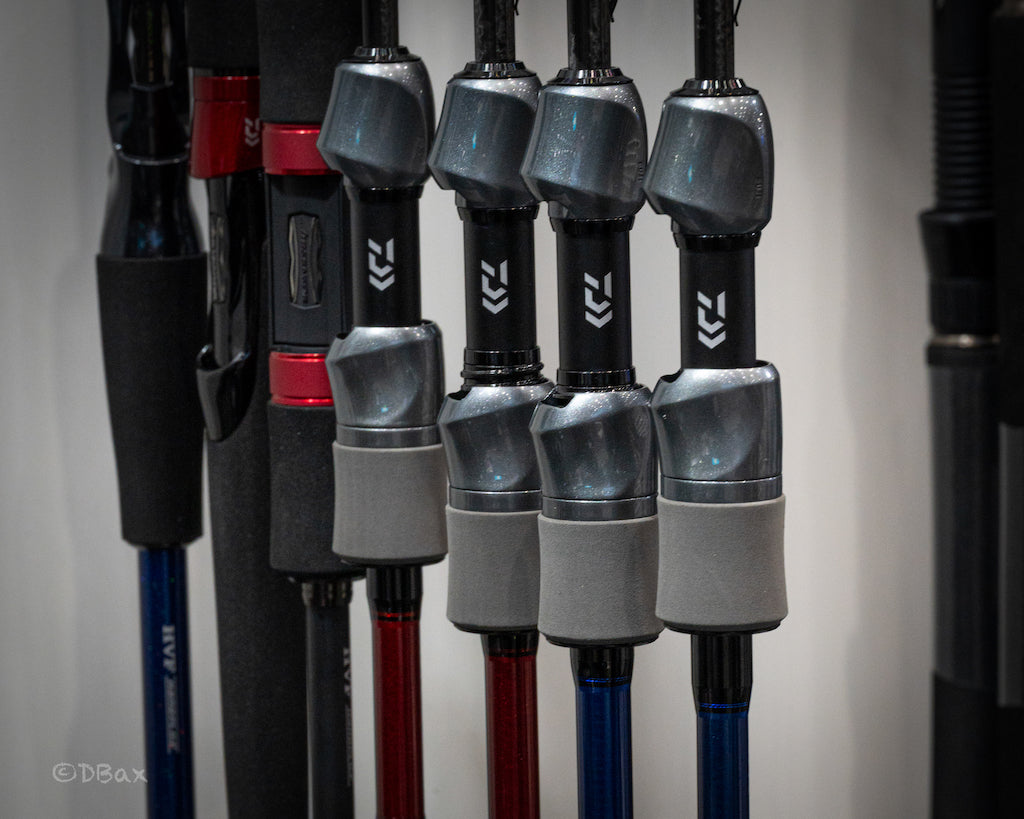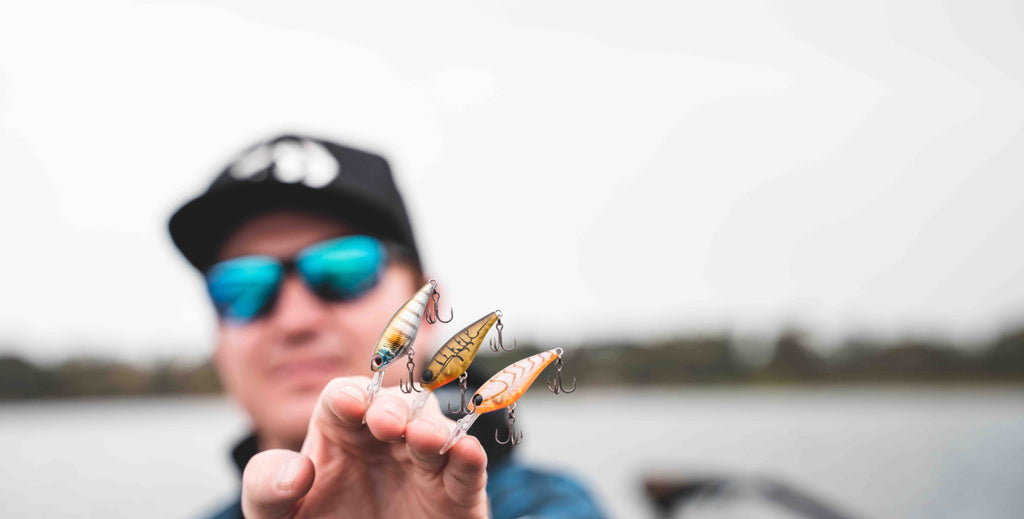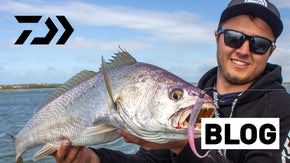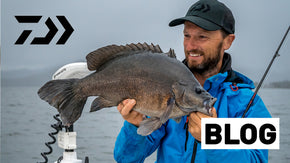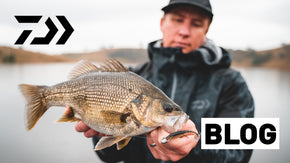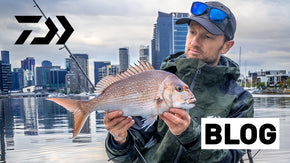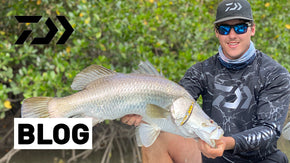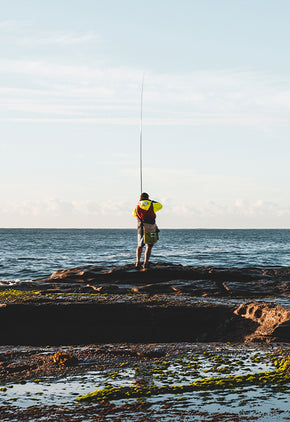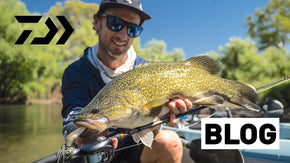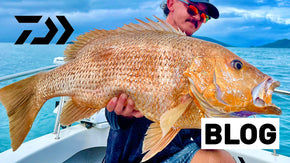Posted 22th April 2024
How to catch sooty grunter: A complete guide
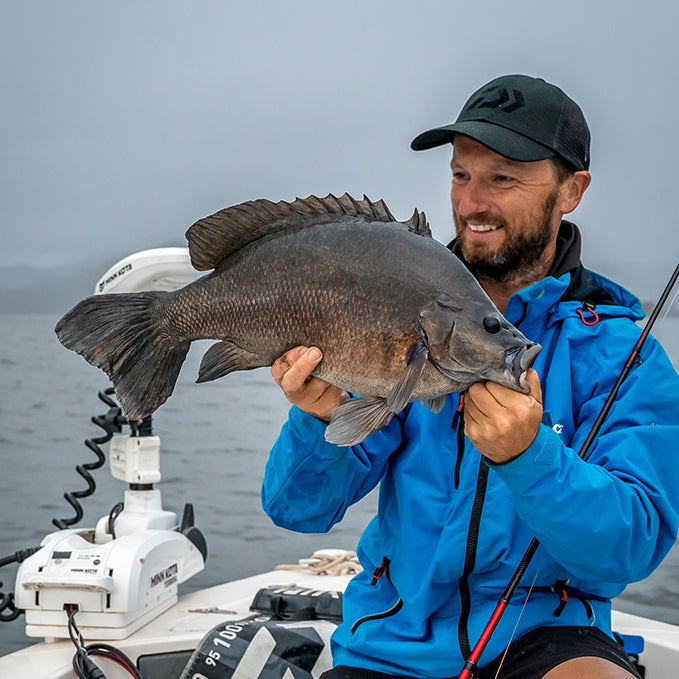

By Robert Thornton
With the sheer volume of great sportfishing options in Australia there are a few species that, despite being top sport on the end of a line, regularly fly under the radar. Sooty grunter are one of those species.
Anyone lucky enough to tangle with these tropical brutes will be familiar with their tenacity, as well as the grandeur of the places they live, and yet still they are tossed to the side in favour of other species.
In this blog we’ll look into this unsung hero of the north and why they don’t always get the recognition they deserve. We’ll also look at where to find them, suitable tackle, and which lures to use in the different scenarios they can present you with!

A firm sooting
Sooties go by a few different names in Australia, with the most common alternative name being, confusingly, ‘black bream’. They’re part of the large family Teripontedae, which includes which includes silver perch, khaki grunter, coal grunter, barred grunter and many, many more.
These fish can be found in coastal freshwater streams and rivers from around Mackay in Queensland, northwards to the Gulf of Carpentaria (however notably absent in the Cape York area) and westwards to the Northern Territory. A distinct strain, possibly a sub-species, is found in the eastern Kimberley of Western Australia. Other very similar strains, species and sub-species exist through the Indo-Pacific as well, including an undescribed species in southern New Guinea.
These fish prefer fast-flowing freshwater streams, where they feed opportunistically on a range of prey including small fish, shrimp, crayfish, insects, frogs, worms, palm berries and plant roots. With that said, they are also quite comfortable living in other environments, including slower-flowing inland rivers, brackish estuaries and even impoundments and land-locked lagoons where they have been stocked or have established self-sustaining populations.
Spawning occurs through summer during high flows, where fish will often migrate some distance to where the environment is most suitable.
Sooty grunter are reputed for being a hardy species and can often become the dominant species in a river system, and this is thanks largely to their ability to live and thrive under a variety of conditions. These fish seem to have gained a firm foothold across much of the north!

Sooty grunter on lures
Sooties are a fantastic sportfish that offer so much to anyone who enjoys fishing with light tackle, and no one can speak more highly of these fish than Daiwa Australia’s own Simon Goldsmith.
“These guys are highly aggressive, they eat a variety of lures and you can catch them in variety of places,” he explains. “You can catch them in an impoundment full of flooded tress in 60ft of water, or in 30cm of clear water running through a cane field.”
“They just tick a lot of boxes,” he adds.
Unfortunately, sooties often don’t get the credit that they rightly deserve among anglers, and there’s a few reasons for this. One of the main reasons is that sooties live in regions where other, more sought-after species such as barramundi, jungle perch and mangrove jacks are common. As a result, many anglers don’t even want to learn how to catch sooty grunter.
“There is this horrible mentality when it comes to fish,” Simon explains, “especially among lure anglers, that one is better than another.”
“For me, fishing is not just about the size of the fish,” he goes on, “it’s also where you catch them, how you catch them and what you catch them on.”
“I would rather see a 40cm sooty come out and eat a surface lure in gin clear water than catch a 1m barra on soft plastic at night, but maybe that’s just me.”

Soots gone wild
Soots are arguably at their best in the pristine freshwater streams of the tropical north. In these environments, the countryside is usually beautiful, the water clear, and the fish numerous.
Finding sooties in these regions is often just a matter of finding water, but there are factors that influence how productive a river or creek might be.
“In the wild I like to look for a system where I have a big river that is fed by smaller rivers, with even smaller streams feeding those rivers,” Simon says.
“I believe they prefer systems with a high diversity of size of water,” he goes on, “and therefore a variety of different habitat, like mangroves, boulders, sandy-bottomed creeks and so on.”
The regions that sooties inhabit tend to change a lot throughout the year as a result of environmental factors like flooding, cyclones, drought and so forth. Having the freedom to move between different parts of the river that offer differing habitat is important for survival. Taking this into account, Simon’s theory makes a lot of sense.
“Most of my sooty fishing has been around the Hinchinbrook region,” he explains, “and at different times I’ve caught them from the brackish water amongst barra and jacks, to right up into the rocky areas where they mix with jungle perch.”
Setting yourself up for wild sooties isn’t difficult, and Simon likes to keep things simple.
“Standard gear for walking or wading a stream is a six and a half to seven and a half-foot ultra-light to light spin rod,” he says, “and on that a 2000-3000 size reel with 8lb braid is fine.”
For rods, Daiwa’s 661LFS or 702LXS models in the TD Hyper range paired with a 2500-sized Legalis or Infeet X reel will make a great creek sooty set-up.
“When the water is low and clear in winter and spring, I like an 8lb leader,” he continues, “while in summer when the flow is up, I’ll go for a 10 to 14lb leader.”
“I had one defining experience around Hinchinbrook during winter,” he explains, “I was on a stream I’d fished before and caught them, however I just couldn’t find them on this particular day.”
“I soon realised that they were sitting deep in the snags, and I had to float weedless soft plastics on a light leader right in their face to get them to eat.”
“The fish were timid and shy because the water was clear and cold,” he says, “however during the warmer months if lure lands within two feet of a decent snag, they’ll usually come out for it.”
Speaking of lures, this is another thing Simon likes to keep simple. While these fish will respond to a huge range of presentations, you only need a handful to cover your bases.
“For the creeks I like to have a selection of topwater lures no bigger than two and a half inches,” he explains, “plus a few different soft plastics of a similar size.”
The creeks that Simon fishes are often shallower than 2ft, so he rarely bothers packing anything for fishing in deep water.
Daiwa’s Slippery Dog 65 and Bait Junkie Kikker Curly are ideal for surface work, while the 2.5” Grub, 2.5” Minnow and Risky Critter will have you sorted on the soft plastic front.
The plastics can be fished on a standard jighead, but many small water addicts like to use weedless presentations or rig them on a Jig Spinner SS for a bit of extra flash.

Those dam sooties!
These fish have also established themselves in a handful of impoundments across the north, either by stocking efforts from local groups or as a result of them being present in the system at the time of the dam’s construction.
Whichever way they get into these waterways, they have the tendency to grow big. Real big!
While 40cm and around 1kg would be considered a cracking fish in the wild, a similar size like Simon. You would need a fish in the mid-50s and pushing 3-4kg to even have a chance of it being dubbed a ‘trophy’ fish. Fish in the high 40s and low 50s are par for the course in dams such as Teemburra, Proserpine, Eungella and Julius. If you want to learn how to catch sooty grunter in dams though, you’ll have to adjust your tactics a bit.
“As a general rule you’re fishing deeper, and running larger lures on heavier tackle,” Simon explains.
“Usually, I’ll put away the spin gear and go for baitcast tackle,” he goes on, “and that’s not just about the size of fish, but also to suit the style and size of the lures I’m using.”
The lures Simon is referring to are spinnerbaits, crankbaits, chatterbaits and bigger topwaters, which tend to make lots of commotion and work well around structure like weed, rocks and drowned timber. These lure types are also highly versatile and ideal when exploring the different habitats that a dam can offer. The Steez Spinnerbait, RPM Mid-Crank 10, Cover Chatter and Slippery Dog 80 cover these bases respectively.
“My advice when chasing sooties in dams is to learn how to cast accurately with a baitcaster in multiple ways,” Simon says, “Practise your underhand, flat cast, overhead, pitch cast…”
“If you do, you’ll get your lure into more spots more often, and of course you’ll catch more fish.”
A rod and reel from the Tatula range is well-suited to lure casting in dams, with the 702MLFB rod and a 150Hor HS reel a fantastic pairing for the job. Braided line in the 15-20lb range is fine, with leaders around 15lb needed for extracting sootballs pushing 3kg.
The underdog
Don’t let anyone tell you sooties aren’t special. Those who regularly chase them will tell you that sooty fishing is just as much about where you chase them and how you catch them as it is about the fish themselves. Simon is no different.
“When you specifically target them with appropriate gear and make the effort to get to the places where they are the dominant species,” he explains, “it makes the whole experience so much more rewarding.”


 Contact Us
Contact Us Blog
Blog About
About
